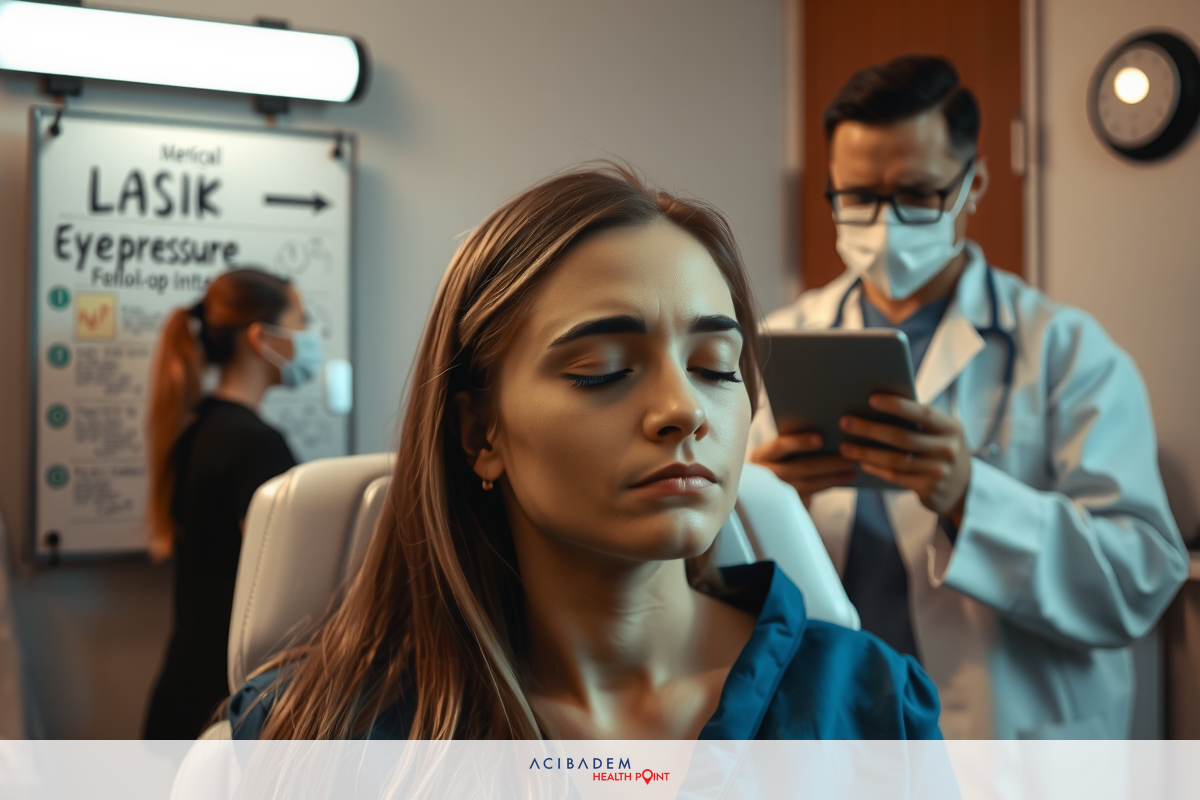When Is It OK to Check Eye Pressure After LASIK
When Is It OK to Check Eye Pressure After LASIK In the wake of undergoing a LASIK procedure, patients often find themselves awash with questions, concerns, and curiosities. One common query pertains to the appropriate timing for checking eye pressure post-surgery. The very nature of this question belies the importance placed on maintaining optimal ocular health after such an operation.
In response to these valid patient concerns, medical professionals have developed guidelines based on research and experience. While it’s not standard practice to check eye pressure immediately following the procedure, routine follow-up appointments serve as an excellent opportunity for monitoring. Yet, there are instances wherein signs may indicate a necessity for more immediate attention – all factors that underline how vital nuanced understanding is in navigating post-LASIK care.
When Is It OK to Check Eye Pressure After LASIK Immediate Post-Op Period
LASIK surgery has become increasingly prevalent worldwide. This popularity is largely due to its high success rates and rapid recovery periods. Yet, despite the straightforward nature of the process, it’s normal for patients to have concerns about their post-operative care – specifically regarding when it might be necessary or safe to check eye pressure following LASIK.
One common misconception is that eye pressure needs immediate monitoring after surgery. However, this isn’t typically the case. Medical professionals usually advise against checking eye pressure immediately postop because the eyes need time for healing and stabilization. This period allows for any temporary fluctuations in intraocular pressure caused by the operation itself or associated medications to return back within a normal range.
Another contributing factor as to why there’s no rush in checking eye pressure directly after LASIK pertains to how these measurements are taken. The act of taking an intraocular pressure reading could potentially provoke unnecessary discomfort or disturbances during a crucial healing phase if done too soon after surgery. Thus, healthcare providers generally recommend waiting until scheduled follow-up appointments before commencing regular checks again.
Follow-Up Appointments
After undergoing LASIK surgery, the journey to recovery doesn’t end when you leave the operation room. It instead transitions into a series of follow-up appointments designed to monitor progress and ensure optimal healing. One critical aspect that these appointments assess is eye pressure, a key indicator of ocular health.
The timing for these check-ups varies based on individual factors such as the patient’s overall health condition and specific intraoperative occurrences. However, it’s fairly standard for the first post-LASIK appointment to occur within 24-48 hours after surgery. During this initial visit, medical professionals may conduct an eye pressure evaluation if they deem it necessary and not likely to interrupt the healing process.
After LASIK surgery, follow-up appointments are typically scheduled at one-week, one-month, three-month, six-month, and annual intervals. These appointments include routine eye pressure checks, unless there are specific reasons to avoid them for patient comfort or safety. These regular assessments help monitor the postsurgery recovery and allow for early detection and management of potential complications, such as elevated eye pressure, contributing to successful LASIK outcomes.
Signs of Concern
While predetermined follow-up appointments set the standard for monitoring eye pressure post-LASIK, there are circumstances where immediate attention may become necessary. Certain symptoms can serve as warning signs

that something isn’t quite right with your eyes after surgery. Awareness of these signs is essential in ensuring a smooth recovery and preventing potential complications.
Eye discomfort beyond the expected initial mild irritation post-surgery could signal an issue requiring further investigation. Symptoms such as severe pain, increased light sensitivity, sudden vision loss or changes, seeing halos around lights, redness or swelling are all cause for concern and warrant immediate medical attention. In such cases, healthcare providers might need to check eye pressure outside of regular follow-ups to rule out complications like ocular hypertension.
It’s also imperative to understand that while these symptoms could potentially indicate elevated eye pressure levels – they don’t exclusively do so. They may signify other conditions requiring treatment too. Hence, it’s crucial not to self-diagnose but instead seek professional evaluation promptly if experiencing any unusual occurrences after LASIK surgery.
Frequently Asked Questions
Why isn't eye pressure checked immediately after LASIK surgery?
The primary reason is that the eyes need time to heal and stabilize post-operation. Checking eye pressure right away could potentially disrupt this healing process, leading to discomfort or other complications.
When are follow-up appointments typically scheduled after LASIK?
Generally, the first follow-up takes place within 24-48 hours of the procedure. Subsequent visits are usually scheduled at one week, one month, three months, six months, then annually following surgery.
What signs might indicate a need for an immediate check on eye pressure outside regular appointments?
Symptoms such as severe pain in your eyes, increased light sensitivity, sudden vision loss or changes in vision quality may be cause for concern and warrant immediate medical attention.
Are these symptoms always indicative of high eye pressure levels?
Not necessarily; while they can be associated with elevated intraocular tension levels – they might also signify other conditions requiring treatment. It's important not to self-diagnose but instead reach out to healthcare professionals if you experience any unusual symptoms.








